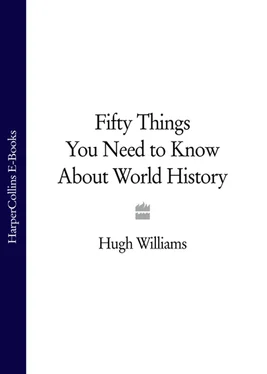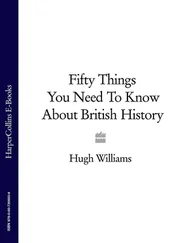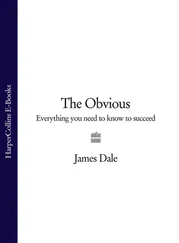1 ...7 8 9 11 12 13 ...24 Although manufacturing and trade were very important, land remained Europe’s principal source of wealth. Land belonged to the Crown, the Church and the nobility. In this organisation the nobility furnished the monarch with military support in return for being given valuable estates which the peasants farmed in return for the service they gave to their lords and masters. By the middle of the fourteenth century, however, the nature of the relationship between landowner and peasant had begun to change. The old system of labourers being tied to the manor by bonds of duty and obligation had developed into one that was more similar to a straightforward relationship between landlord and tenant. With labour scarce the tenants had more bargaining power and in some cases were able to move from one manor to another in search of work. Some estates broke up as their owners decided to lease the land to peasant farmers rather than own and manage it all themselves. A nation’s wealth, once the exclusive preserve of a small ennobled governing class, began to be shared more widely. This was a gradual but significant process. The Flemish, French and English peasants who marched in anger and desperation against those who ruled them won no immediate victories, but the underlying causes of their grievances began a slow transformation that would ultimately move Europe out of feudalism and into the modern world.
The plague remained a constant feature of European life after the Black Death of 1348–50 finally died out. It has been estimated that Europe suffered an outbreak somewhere every eleven years in the hundred years that followed. It continued after that: its last great manifestation was the Plague of London in 1665 which killed about twenty percent of the city’s population. In the middle of the seventeenth century people were rather more organised about coping with an outbreak of disease than they had been three hundred years earlier, but they still had no idea what caused it. The author Daniel Defoe wrote an imaginary diary of the London Plague more than fifty years after it happened. It was based on parish records and the recollections of citizens who had been there at the time: ‘So the Plague defied all medicines; the very physicians were seized with it, with their preservatives in their mouths; and men went about prescribing to others and telling them what to do till the tokens were upon them, and they dropped down dead, destroyed by that very enemy they directed others to oppose.’
Man cannot fight the things he does not understand. His greatest achievements can be destroyed by the unexpected. The Black Death terrified Europe, descending like a threatening cloud that brought it to a halt and left it groping for a new direction. Its effects were devastating. The population in many places declined by as much as thirty or forty percent – and stayed there, failing to recover even when the epidemic had long passed. The population of Toulouse, for instance, stood at 30,000 in the early fourteenth century: a hundred years later it was only 8,000. The Italian poet and author Boccaccio witnessed the effects of the disease in Florence and wrote about it in his book, The Decameron. He described the mass burials and claimed that some women developed loose morals because of the need to ‘expose’ their bodies as they investigated their illness. ‘The authority of human and divine laws almost disappeared,’ he wrote. ‘Every man was able to do as he pleased.’ The Black Death fundamentally changed people’s attitudes towards wealth, and left behind a world very different from the one upon which it inflicted such horror.
CHAPTER 5
The Foundation of the Dutch East India Company 1602
For a hundred and fifty years, from the end of the sixteenth century to the middle of the eighteenth, world trade was dominated by the Dutch Republic. This achievement was largely due to the creation of a unique institution, the Dutch East India Company.
William the Silent is one of the great heroes of European history. His proper name was William of Orange, a Dutch nobleman who resented the injustice of the Spanish occupation of the Netherlands at the end of the sixteenth century, rebelled against it and led the seven Dutch United Provinces to independence as a republic. He was called ‘the Silent’ because he was careful about what he said in public, sometimes avoiding saying what he thought. Under his leadership in 1581, the United Provinces signed the Oath of Abjuration in which they renounced Spanish rule. Although they were not formally granted independence until nearly seventy years later, in 1648, they operated from this moment on as a nation in their own right. The Spanish King, Philip II, proclaimed William an outlaw and he was assassinated three years after the Oath. ‘As long as he lived,’ wrote the American historian, J. L. Motley, ‘he was the guiding star of a whole great nation, and when he died the little children cried in the streets.’
At the time of his death the republic he had helped to create seemed an insignificant country compared to the magnificence of the Habsburg Empire from which it had seceded. Only the northern part of the Netherlands had secured its independence. The south was still firmly under Spanish control: its Catholic nobility did not want to be part of William’s little republic and remained allied to King Philip and his able commander in the Netherlands, the Duke of Parma. From these inauspicious beginnings the Dutch Republic grew with astonishing speed. At home, the work of its artists turned it one of the finest centres of painting Europe has ever seen, and the seventeenth century became known as the ‘Golden Age’ of Dutch art. Abroad it demonstrated rather more practical, and ruthless, skills as the commercial activities of the Dutch East India Company transformed it into a world power.
The Dutch East India Company changed the commercial history of the world.
The Dutch East India Company changed the commercial history of the world. It was created after a period when it seemed as though William the Silent’s dream of independence had died with him. Some of the Dutch provinces, disunited and unable to agree on a common ambition, were taken back into Spanish control by the Duke of Parma. But in 1590 he was despatched to France by Philip II to support Catholic opposition to the new French King, the Protestant Henry IV. With Parma out of the way, the Dutch rebels were at last able to consolidate their drive for independence and make the transition from a group of united provinces to a proper republic. But it was still a nation made up of separate entities. Although it was governed by a ‘States General’ that represented all the country’s different provinces, its constitution stated that this body ‘had no overlord but the deputies of the Provincial Estates themselves’.
The Dutch East India Company, the Verenigde Oost-Indische Compagnie, generally known then as the VOC, was the creation of rival merchants with one common interest – the pursuit of wealth. In 1598 all Spanish and Portuguese ports were closed to Dutch shipping, forcing the United Provinces to look beyond the Mediterranean for new trading opportunities. The obvious markets were South America, which was opening up steadily following the voyages of exploration of the sixteenth century, and Asia. South America was a difficult destination for the Dutch because the Spanish and Portuguese had established firm control there. Asia seemed a better bet, but here the problem was that so many Dutch ships were chasing after the same things that the spoils were in danger of becoming dissipated. By 1599, nine different Dutch companies were in the business of trying to get their hands on spices, tea, cotton and other goods from the East Indies. Many voyages ended in disaster. About a tenth of the ships that set sail never returned and many Dutch crews were lost without trace. The man who came up with a rescue plan was Johan van Oldenbarneveldt.
Читать дальше












